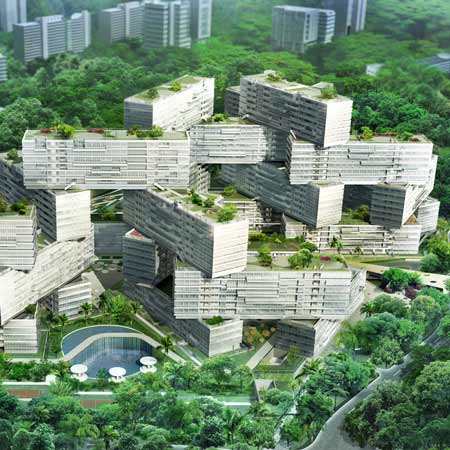
The Interlace by OMA
Architects Office for Metropolitan Architecture have unveiled new images of a residential project for Singapore, comprising long low apartment blocks stacked in hexagonal configurations.
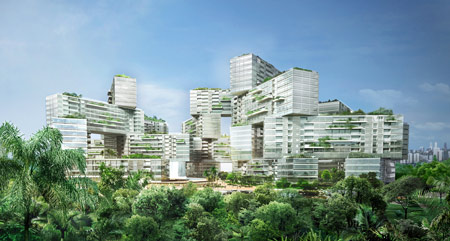
Called Interlace, the project will consist of 31 interconnected six-storey blocks stacked around communal gardens, containing 1,040 apartments.
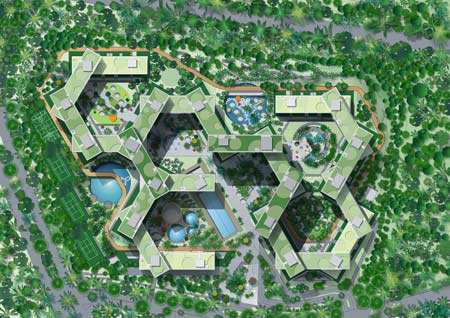
The arrangement allows for communal spaces, roof gardens, terraces and balconies.
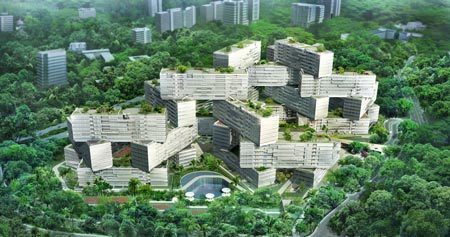
More information in our previous story.
More about OMA in our special category.
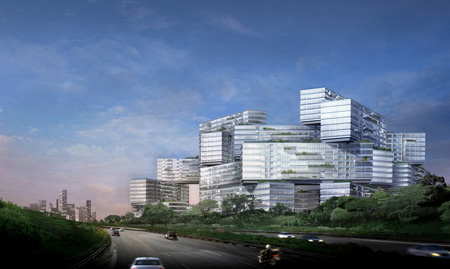
Here's some more information from OMA:
--
OMA unveils design for The Interlace residential complex in Singapore
Ole Scheeren of OMA introduces a new residential typology to Singapore with The Interlace, a large-scale complex of interconnected apartment buildings stacked in an innovative hexagonal arrangement, developed by CapitaLand and Hotel Properties Limited.
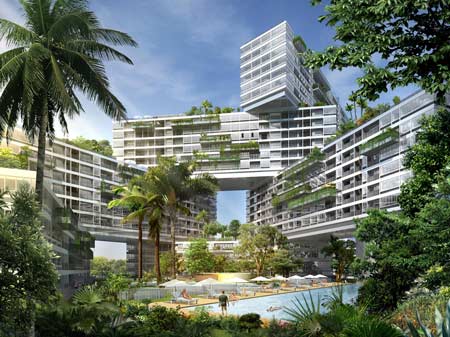
The Interlace is located on an elevated eight-hectare site, bounded by Alexandra Road and the Ayer Rajah Expressway, amidst the verdant Southern Ridges of Singapore. With about 170,000m2 of gross floor area, the development will provide 1,040 apartment units of varying sizes with extensive outdoor spaces and landscaping. The site completes a green belt that stretches between Kent Ridge, Telok Blangah Hill and Mount Faber Parks.
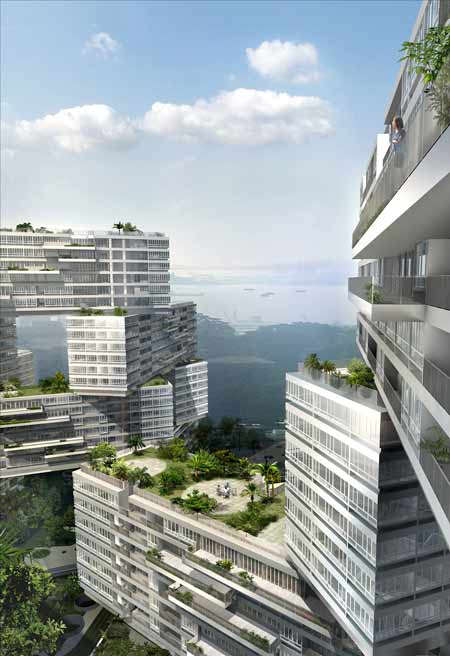
Designed by Ole Scheeren, partner of the Office for Metropolitan Architecture (OMA), The Interlace breaks away from Singapore’s standard typology of isolated, vertical apartment towers and instead explores a dramatically different approach to tropical living: an expansive interconnected network of living and communal spaces integrated with the natural environment. Thirty-one apartment blocks, each six-stories tall and identical in length, are stacked in a hexagonal arrangement to form eight large-scale open and permeable courtyards. The interlocking blocks form a vertical village with cascading sky gardens and both private and public roof terraces.
The design capitalizes on the generous size of the site and further maximizes the presence of nature by introducing extensive roof gardens, landscaped sky terraces and cascading balconies. Above-ground vehicular circulation is minimized, liberating large green areas within the development. The Interlace incorporates sustainability features through careful environmental analysis of sun, wind, and micro-climate conditions on site and the integration of low-impact passive energy strategies.

While maintaining the privacy of individual apartment units through the generous spacing of the building blocks and far-ranging views, the design also features communal spaces for shared activity. Extensive residential amenities and facilities are interwoven into the lush vegetation and offer opportunities for social interaction, leisure, and recreation.
Ole Scheeren said: “The design addresses concerns of shared space and social needs in a contemporary society and simultaneously responds to issues of shared living and individuality by offering a multiplicity of indoor/outdoor spaces specific to the tropical context.”
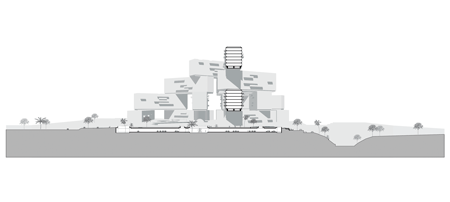
Patricia Chia, CEO of CapitaLand Residential Singapore, said: “This is a great opportunity to create and build a residential destination at the Gillman Heights site that will challenge the present architectural definition of living spaces. While developing the dramatic external form, we have also given much attention to creating comfortable internal spaces. The name, The Interlace, reinforces the interconnectivity of the community with the surrounding natural environment. Ole Scheeren has created a new landmark for Singapore.”
The design is led by Ole Scheeren together with Eric Chang, Associate of OMA. Scheeren is responsible for the office’s work across Asia, including the China Central Television Station (CCTV) headquarters and the Television Cultural Center (TVCC) in Beijing, and the MahaNakhon Tower in Bangkok. His previous work includes the Prada Epicenters in New York City and Los Angeles.